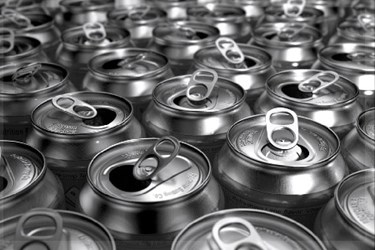Aluminum-Ended PET Container Makes Its American Debut
By Alec Italiano, contributing writer

Dual-material beverage containers provide functionality as well as transparency for thirsty consumers
Many consumers want to see what they are consuming before actually taking a gulp, and with beverages in aluminum cans, this was an insolvable obstacle. However there is a new solution that fixes this problem using multiple materials consisting of a PET body with Aluminum end pieces. The concept was first introduced in Europe two years ago and now has made its way into the US market.
This packaging essentially gives the consumer the best of both worlds: the functionality of a can, and the graphic pleasure of flashy PET designs while being able to see the packaging’s contents as well. It can sometimes be difficult for beverage companies to keep its products looking fresh and new, and this packaging product is an outlet for those companies looking to change things up a bit.
Perhaps even more importantly, these containers can be produced with the same seaming technology as conventional cans because of the aluminum end caps. This means minimal changeover for manufactures considering the switch with can-filling lines. Carbonated water, energy drinks, or any company selling a beverage with bright-colored packaging could benefit from switching to the new packaging.
The containers have been well-received in Europe as consumers seem to welcome this innovative solution to seeing their beverage. The containers come in standard 200 and 202 diameter aluminum ends with fill lines of 12-16 ounces or 250-500 ml. The only potential drawback could be recycling. Since two materials are being combined in the overall package, it may be difficult for recycling plants to quickly separate the plastic from the ends efficiently. As often the case though, one innovation tends to be followed by another.
One example of a similar innovation is Polymerized Lactic Acid (PLA) that is petroleum free and derived from plant resin, making the substance biodegradable. In temperatures greater than 140 degrees Fahrenheit, PLA breaks down making it much easier for recyclers to process. Packaging firms have used PLA’s before, but Clondalkin recently introduced a label made of PLA, making for the entire package to be recyclable.
